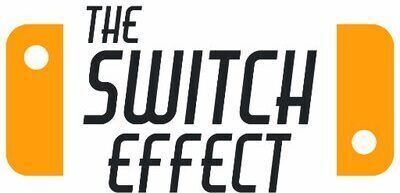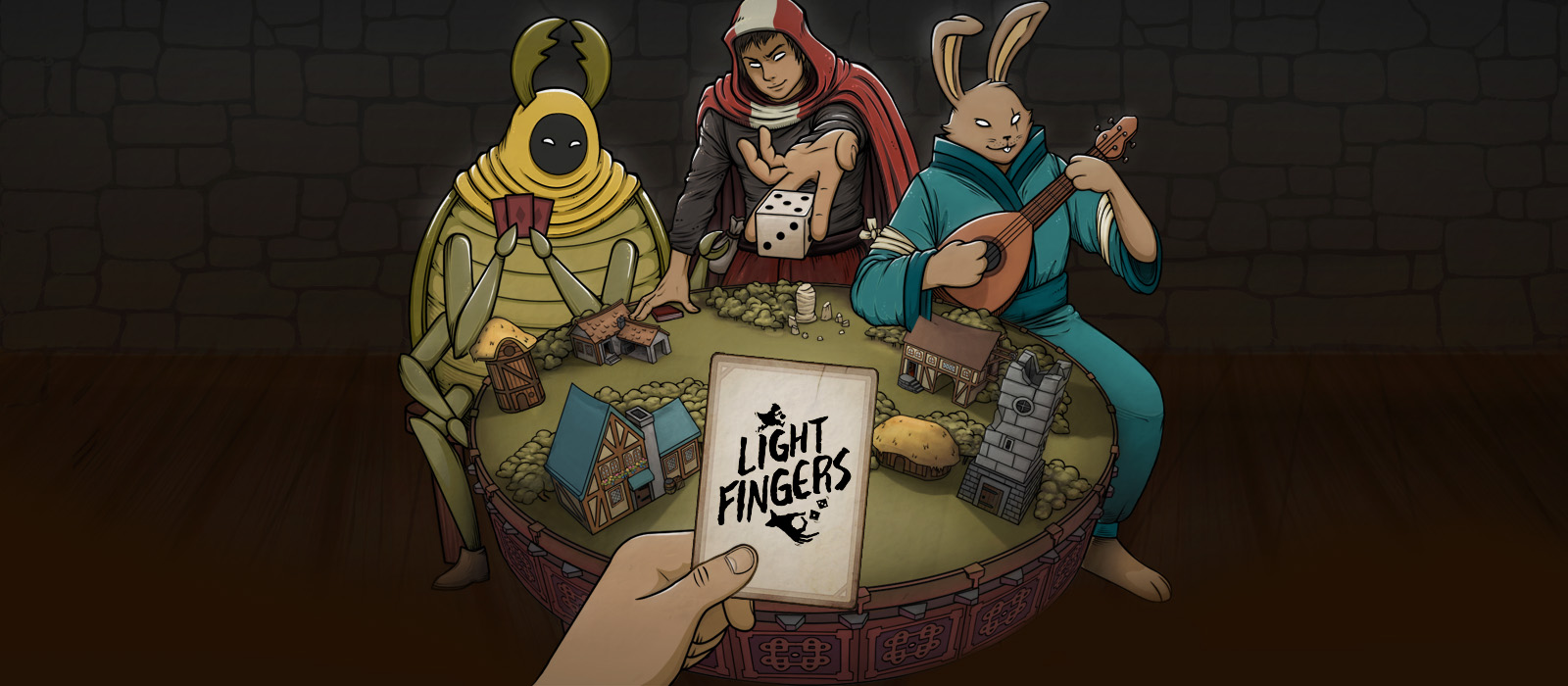Light Fingers
Nintendo Switch
Developed By: Numizmatic
Published By: Numizmatic
Category: Board Game, Strategy,
Multiplayer, Platformer
Release Date: 09.20.18
Who doesn’t love to kick back and relax after a hard day at work? Whether you’re a regular Joe working your nine-to-five in the real world, or a giant roach person thieving away in a magical clockwork realm, what better way is there to wind down your day than by kicking back with your friends and playing a game? Numizmatic’s Light Fingers for the Nintendo Switch gives us a pretty specific glimpse of what that game would look like for the latter, and it turns out it’s pretty close to their day job. The game’s conceit is that a bunch of thieves from a fantasy setting are relaxing, playing a tabletop game about what it’s like to… well, to be a thief in a fantasy setting! It’s a little meta, I guess, but the game they play is actually rather fun, so I won’t hold that against it – not that I ever do; a little ambition in a game’s narrative is a good thing. There just isn’t really a narrative here, so it just feels a little extraneous to have a frame like that. But, heck, enough bellyaching – I already said the game was fun, didn’t I? Let’s get to that part instead.
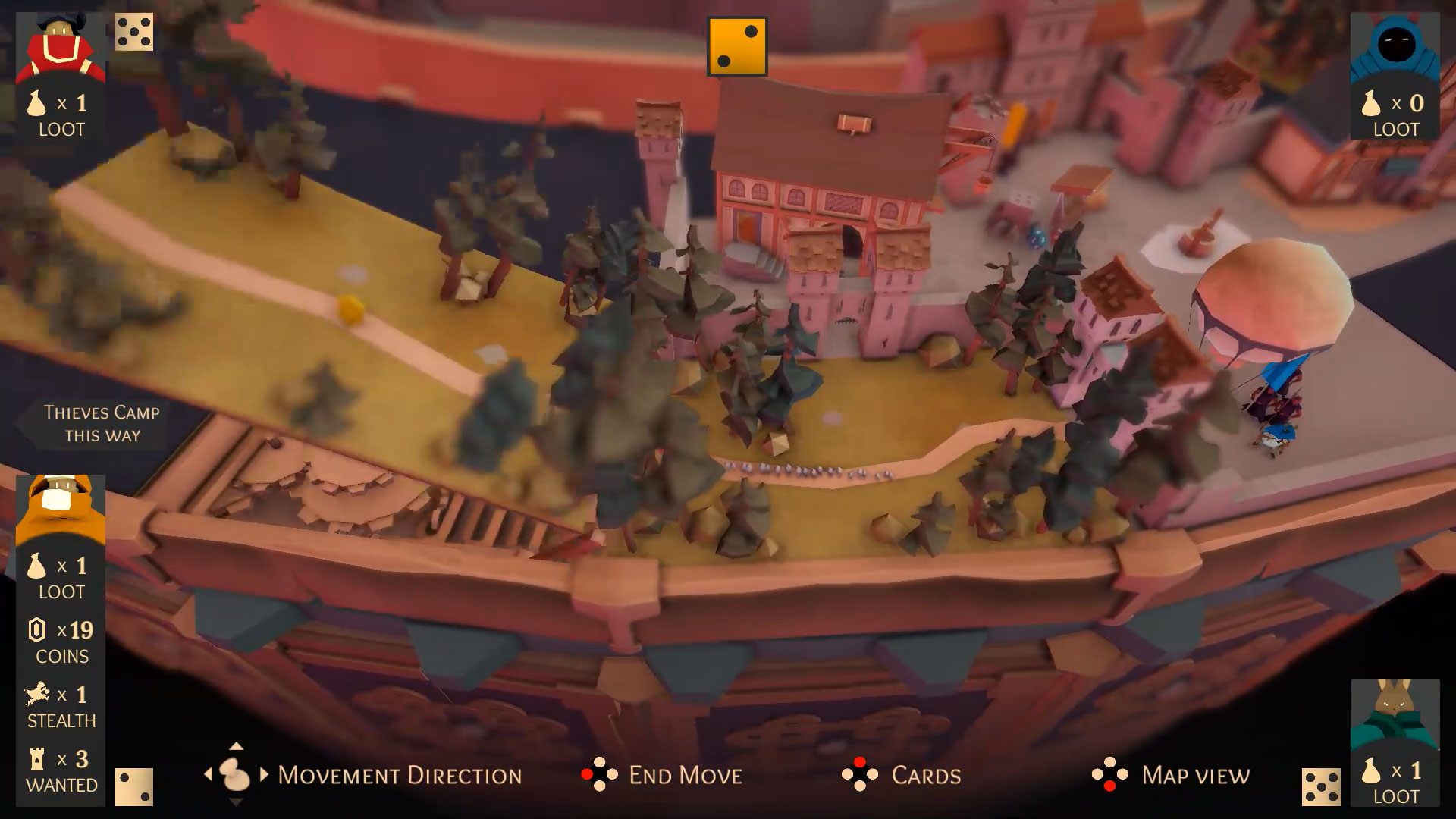
Dungeons and Board Games
Light Fingers offers its players two ways to play; the board campaign and the dungeon rush mode. I’ll focus mostly on the board campaign, because dungeon rush just strips away the board game element and leaves you with only the game’s platforming portions. But the biggest difference for a lonely boy like me is that the board campaign is multiplayer only, whereas dungeon rush can be played single-player. Unfortunately, dungeon rush gets rid of the most fascinating parts of the game, so it’s a little less rewarding. Let’s get to that in a second; first, let’s talk about the basics.
The board campaign is for two to four players, and basically works like this: players have a certain number of turns to collect a set amount of loot for Master Kaw, the leader of the thieves’ guild. The game takes place on a circular board made of tiles in three rings. You roll dice every turn to determine your move points, and the player with the lowest roll goes first. You discover new tiles as you move onto them; new tiles usually have either a few gold coins or a card to be gathered. Tiles can contain many different locations that provide useful services or opportunities; you can come across cave systems to move to a different part of the board, dungeons to explore, or shops from which to buy useful items.
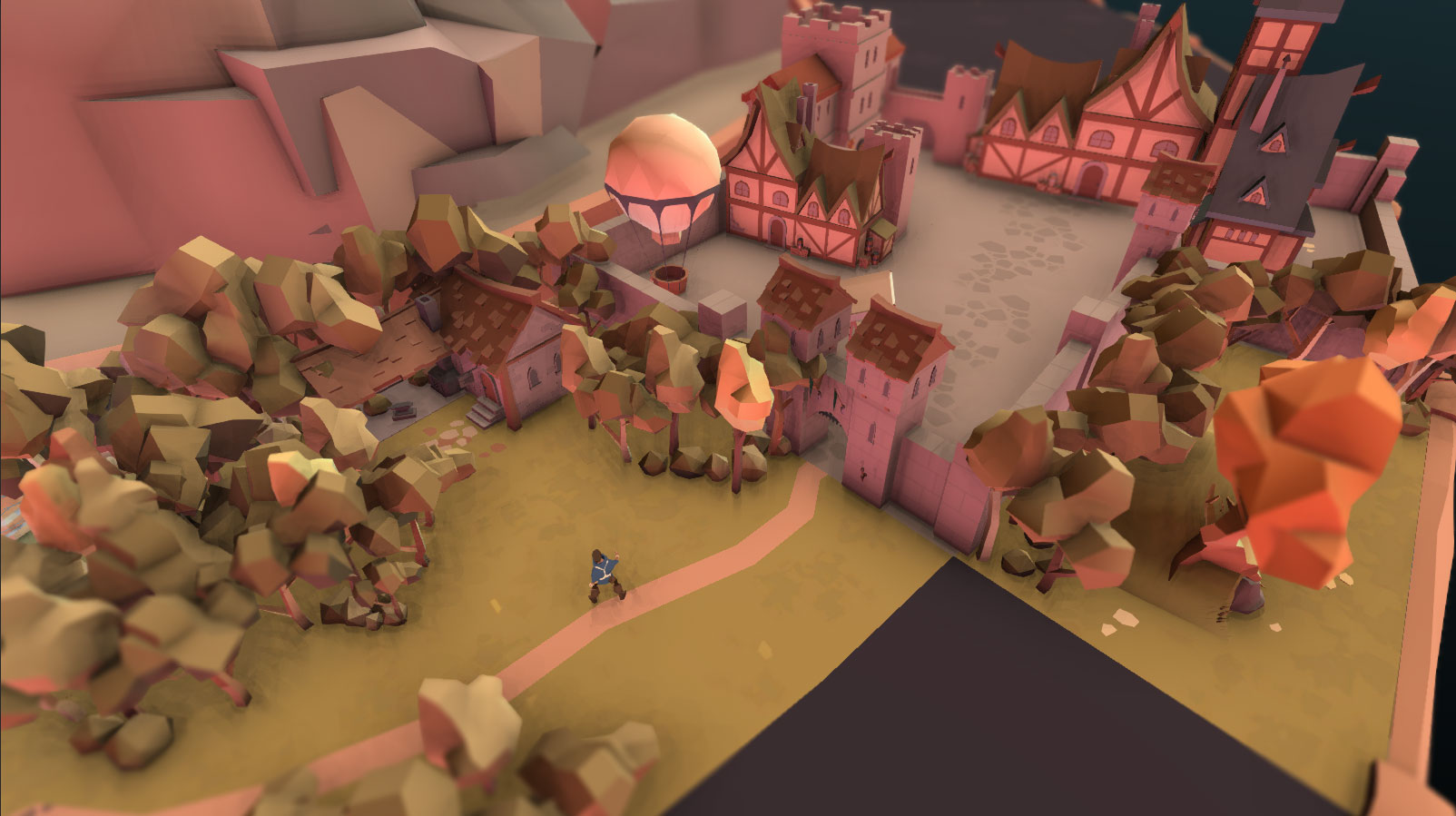
Enter the Dungeon
Ending your turn on a dungeon results in your character entering the dungeon to look for loot. If multiple players end their turn on the same dungeon tile, they all enter the dungeon together. Players who do not enter the dungeon play as the defenders along with the AI, Master Kaw (but you can turn the AI players off when you start a game if you want). Players who enter dungeon have to grab the loot at the end of the dungeon, and the defenders have to stop them. Both infiltrators and defenders can grab coins in the level. If one infiltrator dies while another is still alive, he becomes a defender until the other player like wise perishes, then they both restart at the beginning, assuming you still have enough lives.
Platforming Espionage Action
For infiltrators, the name of the game is dodging traps and evading guards while grabbing up as many coins as possible on your way to be the first to grab the dungeon’s loot chest. There are often smaller chests around the dungeon which contain coins, which are a bit of a pain; when you open chests near a ledge, a bunch of the coins often fall off the edge before you have any chance to grab them. It’s a little frustrating, but it’s not like coins are a main focus of the gameplay; they just make things easier through shops (more on that later). Other than that, Light Fingers plays like any 3D platformer; you can run, jump, and roll to get past obstacles, and punch to open chests and KO guards. Golem guards patrol portions of the game board; they can only be knocked out when punched from behind, though, so mind your stealthiness.
You get three lives to use up when infiltrating a dungeon; run out of lives and you’re kicked out of the dungeon, but you get to keep the coins you collected along the way. Checkpoints throughout each dungeon make sure you don’t have to go all the way back to the beginning every time you mess up, which I appreciated when they were there, but I wish there had been more. The camera is positioned at an awkward angle for platforming – I found it tough to gauge jumps, especially on moving bridges and twirling platforms. I know there needs to be some challenge, but the odd angle made depth perception a little murky, which is more of a frustration than a challenge.
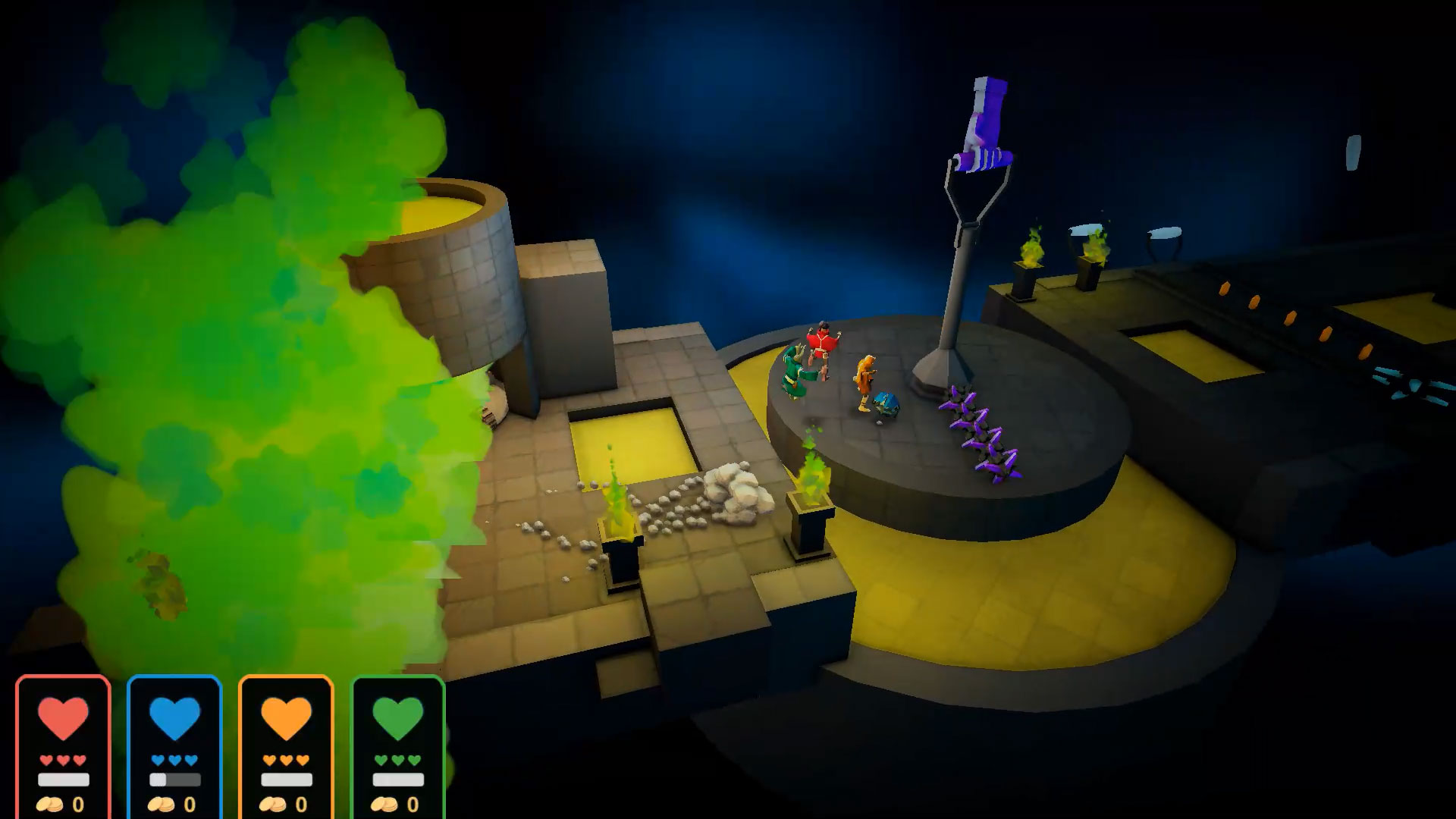
Defender of the Loot
When you play as a defender, things are a lot easier and maybe even a little more fun. You’re just playing spoiler; trying to grab up all the coins before the infiltrators can get to them, as well as just plain try to kill them by activating traps at the right moments. You can use some of the dungeon’s mechanisms to call more guards, activate buzz saws, make platforms spin faster, and pop spikes out of the ground, just to name a few options. Since defenders can’t collect loot, your real objective as a defender is to make sure your opponents can’t get any, either. If you play with the right group of people, it can be a lot of fun.
Hit the Boards
When you grab loot from a dungeon or steal if from a shop, your wanted level rises and guards appear on the map to chase you. Your wanted level lowers every turn you don’t steal something; once your wanted level gets back down to zero, the guards will leave the board and stop chasing you. If the guards catch you then you lose all the loot you’re carrying and your next turn, but your wanted level is set back to zero. You can secure your loot by stashing it at the bandit camp where you started the game; even if guards catch you, they can’t take that loot away. You can evade guards with the use of stealth. You can gain stealth through various actions, which you can spend to hide in certain locations, which will keep you safe from guards for that turn.
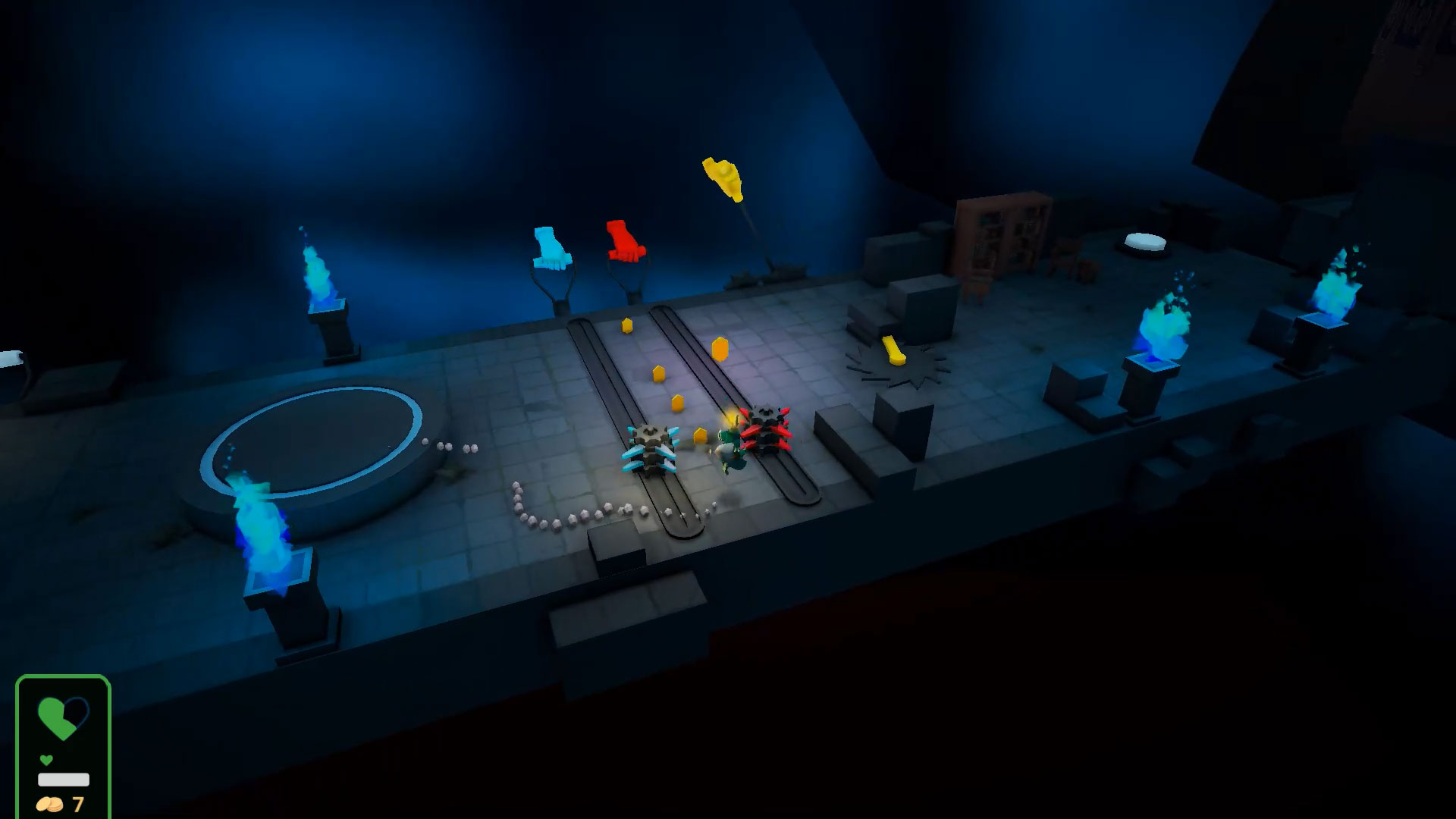
I Challenge You To a Duel
If one player ends their turn when occupying the same tile as another player, a duel takes place. Whoever wins the duel takes one of the other player’s loot. You cannot initiate a duel if the other player has no loot. Duels are a best two out of three button pressing contest; the screen will flash a button to press, and the first player to hit the right button gets the point for that round. If the player initiating the duel has no loot, they don’t really lose anything so there’s really no risk to initiating the duel in that instance. It’s a fun little piece of strategy to decide whether or not to approach another player if you both have loot; balancing the risk and the reward makes for some interesting decision-making.
Shop Til You Drop
The board has shop tiles where you can buy new cards and larger movement die to roll; every dice size up to 20-sided can be purchased if you have the gold. You can also steal loot from the shop, which results in the guards being called. Cards, which I realize I’ve mentioned a few times but haven’t explained yet, can be played to increase your movement or stealth, confuse guards, increase or decrease another player’s wanted level, or add additional traps to a dungeon, among other things. You can only carry up to five cards, and you can only play one card per turn. Cards are a great way to evade pursuit, trip up your opponents, or explore more of the board. They make for some of the more interesting strategic elements of the game, especially if there are more than two people playing. Which character do you target? Is it more important to cripple the game’s leader, or weaken the opponent closest to you so you can get them in a duel?
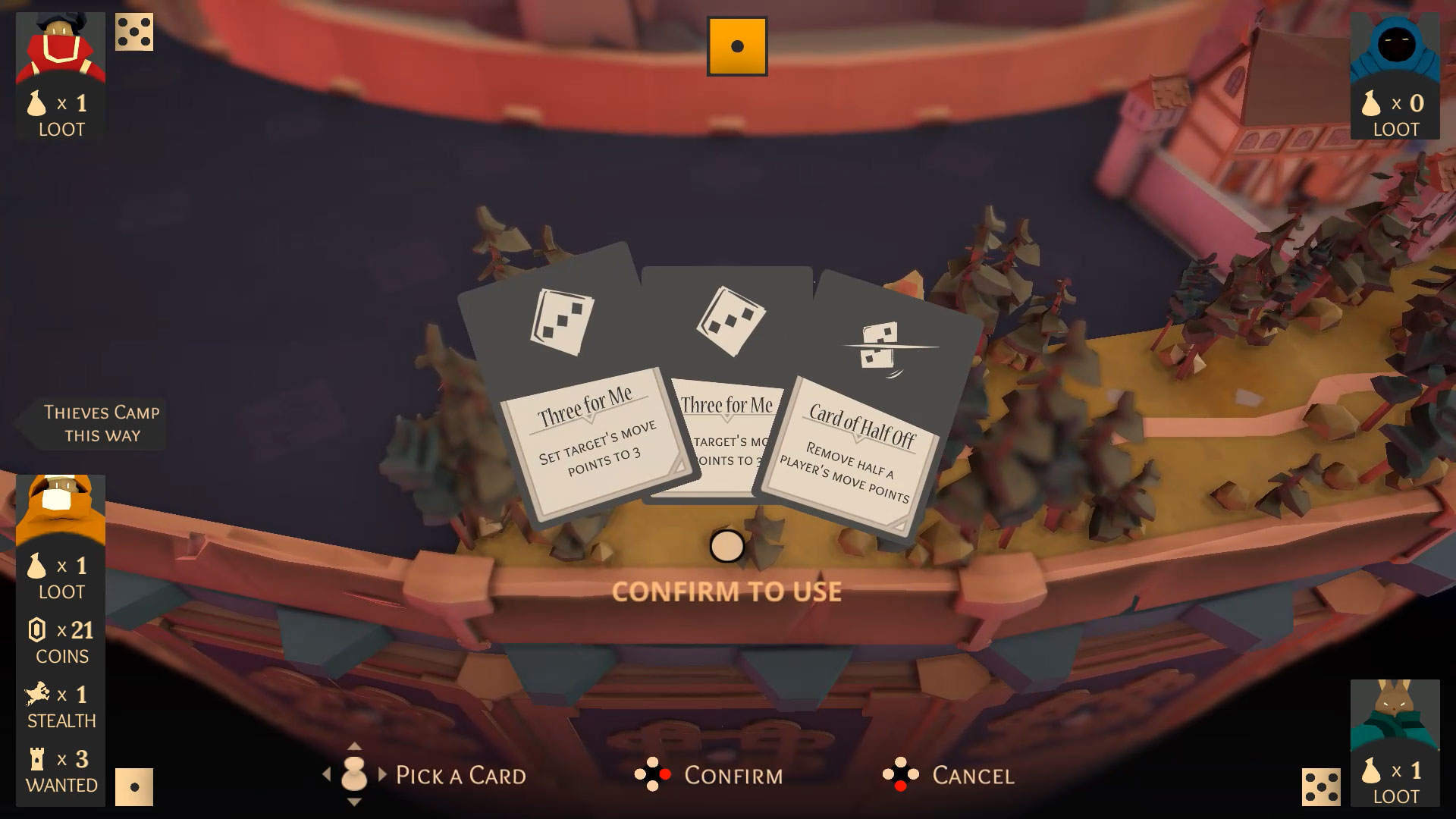
Dungeon Rush Back to Board Campaign
That’s about it for the board campaign mode, which is a lot of fun to play with friends. It’s a couch multiplayer game that lends itself to hours of fun the way any great board game would, but with the added bonus of some gameplay that only video games can offer by way of the platforming aspects. As I said earlier, the game’s other mode, dungeon rush, gets rid of the board game elements and focuses solely on the game’s platforming. I found this mode a lot less fun than the board campaign; for one, as I said earlier, the camera angle is very awkward for platforming. Satisfying 3D platforming really requires a 360 degree camera, in my opinion. I don’t know how you give every player a 360 degree camera in a multiplayer platformer, but that’s just how I feel about platforming. Dungeon rush also lacks any real strategic elements, which was my favorite part of the board campaign mode.
Light Touch of Design Sensibilities
The graphics in Light Fingers are fairly simple; it uses somewhat sparsely-detailed but well-designed models to build its game world. The four characters players can choose to become are somewhat distinctive – except for the two human characters, who look kind of the same. My favorite part of the game was the mechanical game board during the board campaign mode. When you moved to an undiscovered tile, said tile would emerge from under the darkness accompanied by some neat mechanical maneuvering; it was like playing a game on the map from the opening credits of Game of Thrones. The musical stylings should also be very familiar to Thrones fans; it adopts the same medieval sensibilities, with lots or orchestral tracks that utilize horns and string instruments to very dramatic effect. The music on the board screen is very quiet and contemplative, but it gets more exciting when you’re in the dungeons. Either way, it was well-designed and a pleasure to listen to.
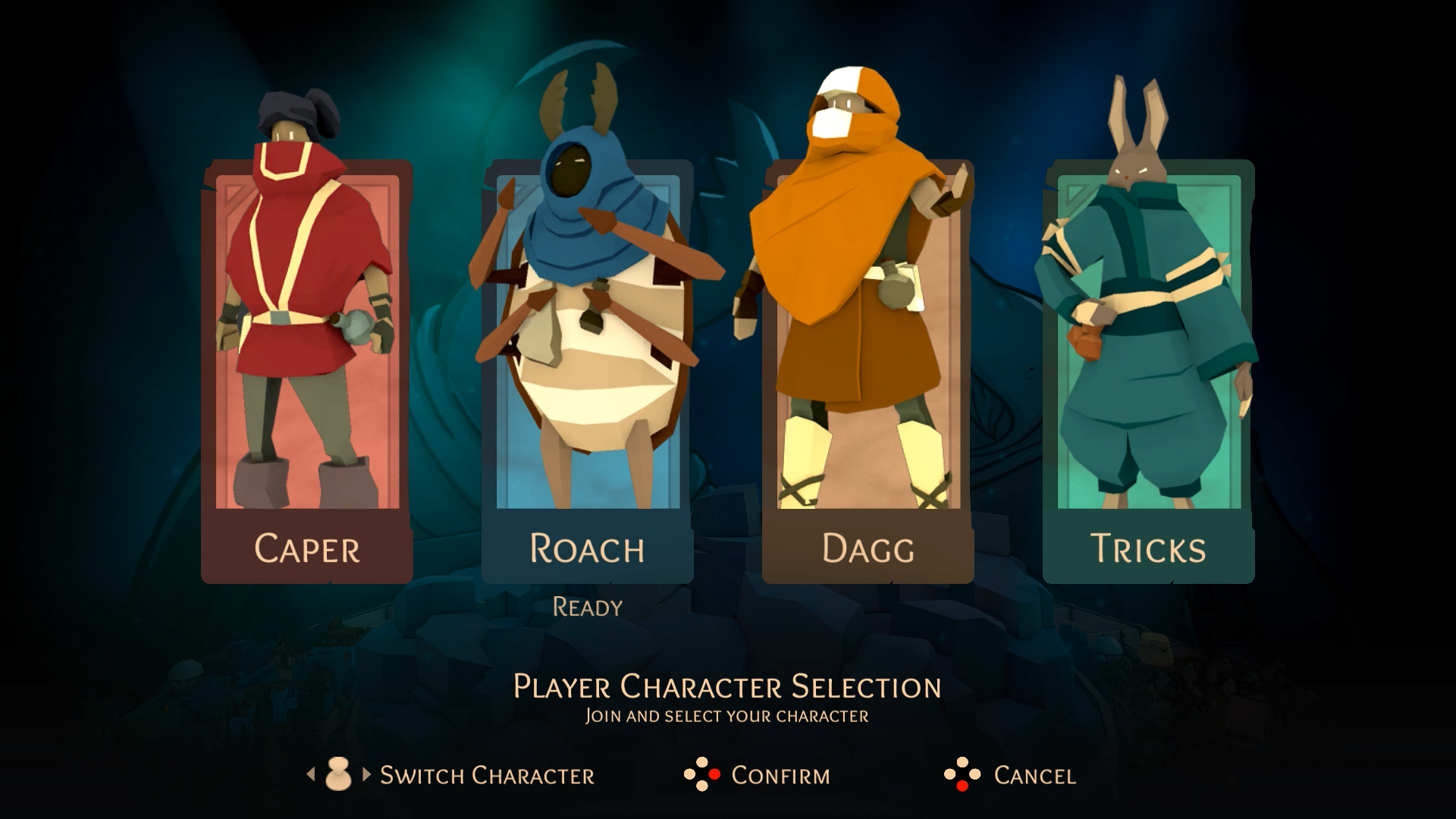
Playability
Light Fingers uses neither the Switch’s touch nor motion controls, so you can play it docked or undocked as you prefer. Personally, I didn’t notice drop in graphical quality while playing undocked, so I don’t really have a strong recommendation for playing it one way or the other. I didn’t even really prefer a Pro controller over a single Joycon; the controls are simple enough that you don’t need a full controller to play it well. I did encounter a bug at one point that kind of broke the game. To leave a shop, you have to leave the edge of its tile. Once, when I did so, the game entered kind of a limbo state where I could use the free-roam function only available in the shop all over the board, but I was unable to end my turn, which pretty much killed the game right there. I had to exit the game and everyone lost the actions they had taken that turn. It was a bummer, but it didn’t permanently erase the game. I guess it was mostly an inconvenience in the end, but it really took the wind out of that play session.
TL;DR: There’s no Winterfell, but the design and mechanics of the board campaign mode are awesome nonetheless; platforming elements could use some work on the camera angle.





Buy Light Fingers
$19.99
Follow Numizmatic

[Review] Hello Kitty and Friends Happiness Parade – Nintendo Switch

Developed By: Dabadu Published By: Rogue Games Categories: Rhythm Release…
